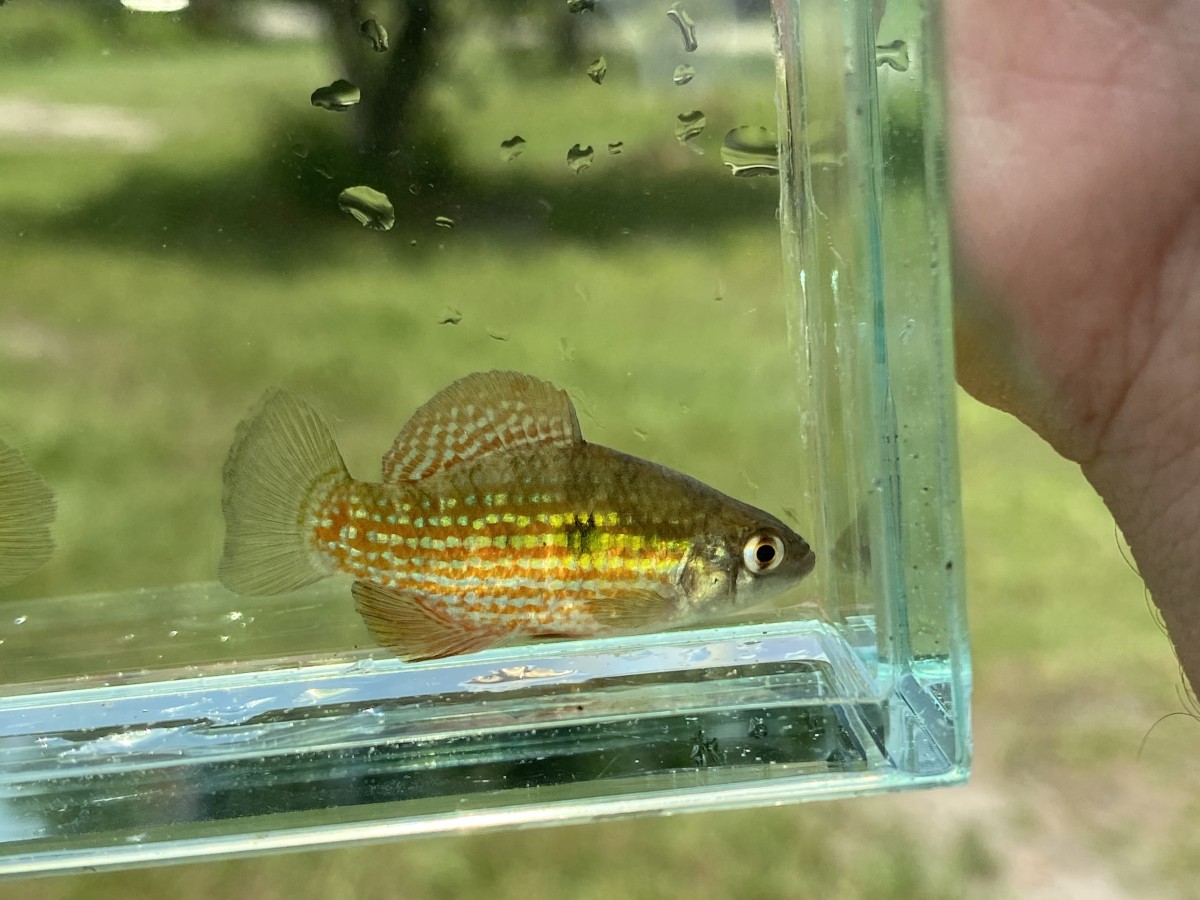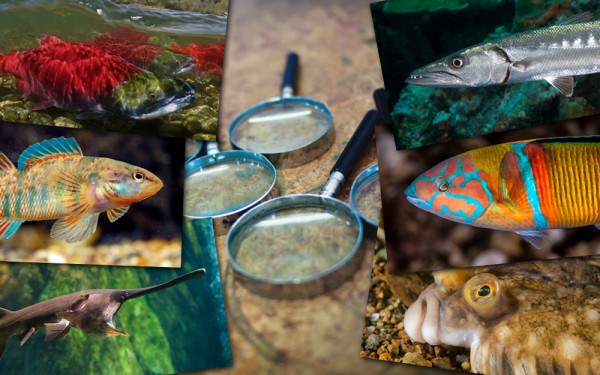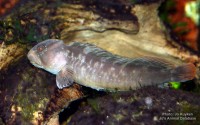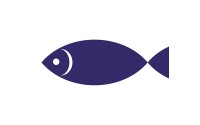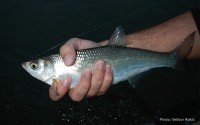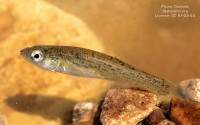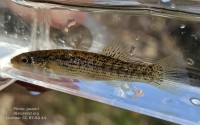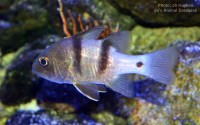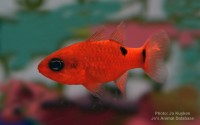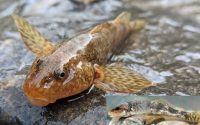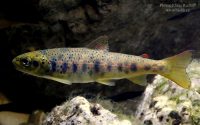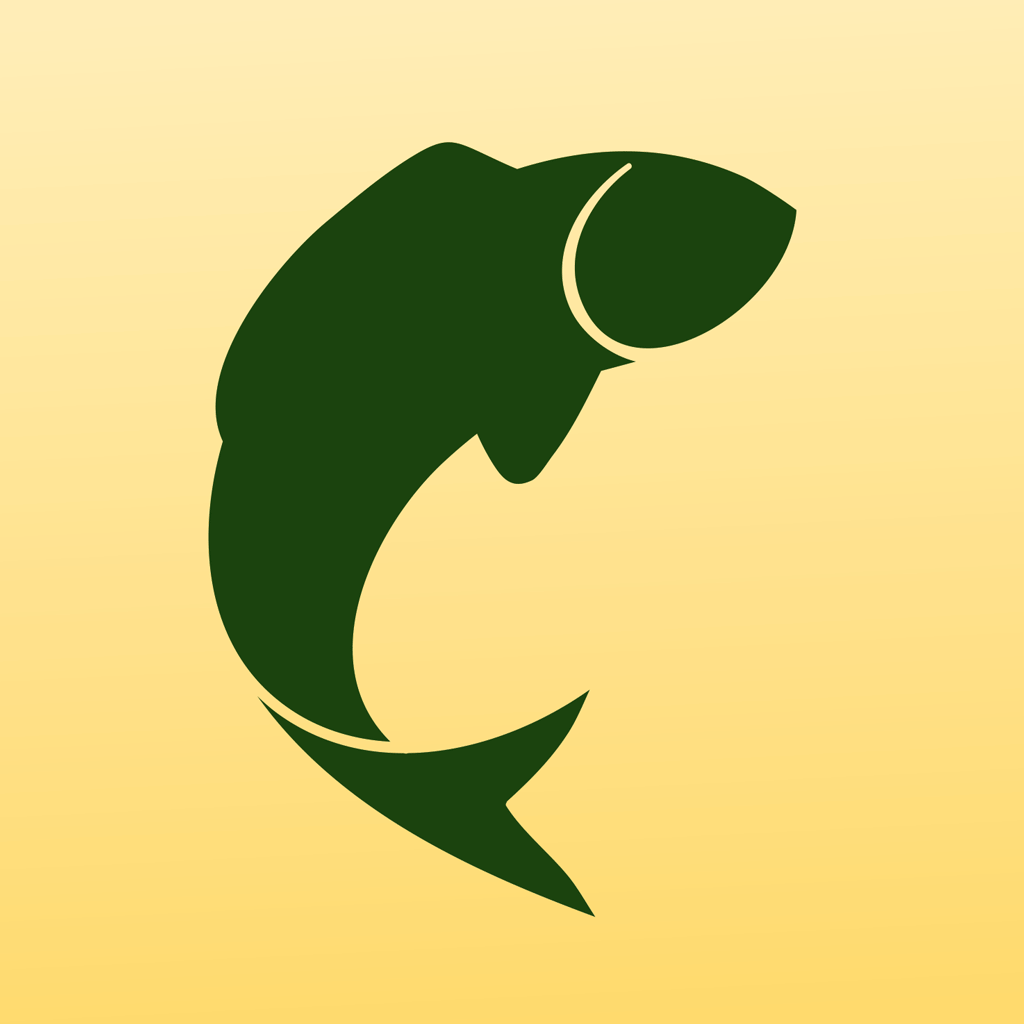Florida flagfish
(Jordanella floridae)
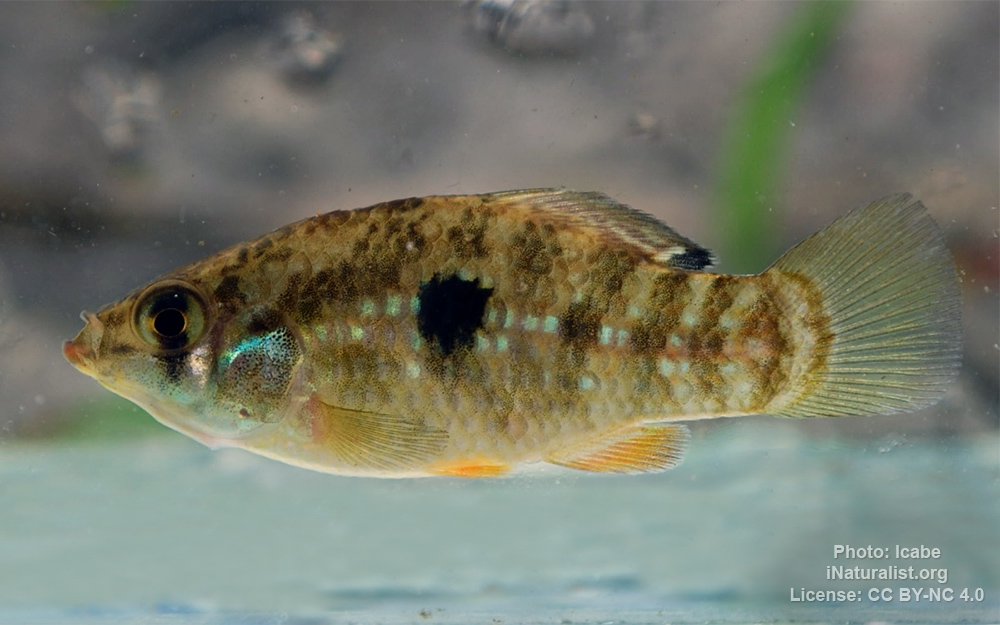
Image source: Image source: lcabe | inaturalist.org
Classification
General data
The flagfish (Jordanella floridae), also known as the American flagfish or Florida flagfish, is a species of pupfish, a type of killifish from the family Cyprinodontidae which is endemic to Florida.
Flagfish are small, robust fish, 6 centimetres (2.4 in) in length, with a truncated snout which has been compared to that of a bulldog. They have rounded fins with the dorsal and anal fins positioned posteriorly and adjoining the caudal fin.
Females have an obvious spot on their flanks and a clear spot near the posterior end of the dorsal fin, this has an opaque white margin. The fins may show a slight reddish color but this comes and goes in any individual but the reason for this is unknown. The females body is mainly olive but marked with turquoise scales.
The common name of the flagfish is derived from the male due to the resemblance of its patterning to the flag of the United States.
There is a dark rectangle on the shoulder which is imagined as the blue and white stars in the corner of the US flag and there are stripes along the flanks, some of which are red and others paler, albeit greenish rather than white. The male also has a dark spot positioned at the lower posterior corner of the dark rectangle. The olive-grey coloration and pattern of nondominant males, females, and juveniles underlies the more colorful pattern of the dominant males.
The flagfish is endemic to Florida where it is found in the Florida Peninsula south of the drainage basins of the St. Johns River and Ochlockonee River.
The flagfish normally occurs in shallow, well vegetated freshwater habitats such as backwaters, marshes, canals and ditches but it has occasionally been recorded in slightly brackish water.
The flagfish is listed in the Guinness Book of World Records as the species of fish which lays the fewest eggs, a female will lay 20 eggs over a period of a few days.
This species is omnivorous, it is a micropredator feeding on small invertebrates and zooplankton but it will also feed on algae and other plant material.
They are often used to naturally control hair algae in suitable aquariums, as they are one of the only fish to consume it in an impactful volume.
